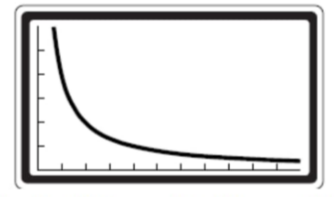FINDING VERTICAL ASYMPTOTES AND HOLES OF RATIONAL FUNCTIONS
Subscribe to our ▶️ YouTube channel 🔴 for the latest videos, updates, and tips.
Describe the vertical asymptotes and holes for the graph of each rational function.
Problem 1 :
Solution:
Vertical asymptotes:
Equate the denominator to zero and solve for x.
(x + 2) (x - 2) = 0
x + 2 = 0 and x - 2 = 0
x = -2 and x = 2
So, the vertical asymptotes are x = -2 and x = 2.
Holes:
The common factor found at both numerator and denominator is (x - 2).
Now, we have to make this common factor (x - 2) equal to zero.
x - 2 = 0
x = 2
So, there is a hole at x = 2.
Problem 2 :
Solution:
Vertical asymptotes:
Equate the denominator to zero and solve for x.
x(x - 1) = 0
x = 0 and x - 1 = 0
x = 0 and x = 1
So, the vertical asymptotes are x = 0 and x = 1.
Holes:
The common factor found at both numerator and denominator is x.
Now, we have to make this common factor x equal to zero.
x = 0
So, there is a hole at x = 0.
Problem 3 :
Vertical asymptotes:
Equate the denominator to zero and solve for x.
x2 - 1 = 0
(x - 1)(x + 1) = 0
x - 1 = 0 and x + 1 = 0
x = 1 and x = -1
So, the vertical asymptotes are x = 1 and x = -1.
Holes:
After having factored, there is no common factor found at both numerator and denominator.
Hence, there is no hole for the given rational function.
Problem 4 :
Vertical asymptotes:
Equate the denominator to zero and solve for x.
x + 2 = 0
x = -2
So, the vertical asymptote is x = -2.
Holes:
In the given rational function, clearly there is no common factor found at both numerator and denominator.
So, there is no hole for the given rational function.
Problem 5 :
Solution:
Vertical asymptotes:
Equate the denominator to zero and solve for x.
x2 + 4 = 0
x2 = -4
So, there is no asymptote.
Holes:
After having factored, there is no common factor found at both numerator and denominator.
Hence, there is no hole for the given rational function.
Problem 6 :
Solution:
Vertical asymptotes:
Equate the denominator to zero and solve for x.
x2 - 9 = 0
(x + 3) (x - 3) = 0
x + 3 = 0 and x - 3 = 0
x = -3 and x = 3
So, the vertical asymptotes are x = -3 and x = 3.
Holes:
After having factored, the common factor found at both numerator and denominator is (x + 3).
Now, we have to make this common factor (x + 3) equal to zero.
x + 3 = 0
x = -3
So, there is a hole at x = -3.
Problem 7 :
Solution:
Vertical asymptotes:
Equate the denominator to zero and solve for x.
x - 4 = 0
x = 4
So, the vertical asymptote is x = 4.
Holes:
After having factored, there is no common factor found at both numerator and denominator.
Hence, there is no hole for the given rational function.
Problem 8 :
Solution:
Vertical asymptotes:
Equate the denominator to zero and solve for x.
So, the vertical asymptotes are x = -4/5 and x = 3.
Holes:
In the given rational function, clearly there is no common factor found at both numerator and denominator.
So, there is no hole for the given rational function.
Problem 9 :
Solution:
Vertical asymptotes:
Equate the denominator to zero and solve for x.
x2 - 4 = 0
x2 = 4
x = ±2
So, the vertical asymptotes are x = 2 and x = -2.
Holes:
After having factored, there is no common factor found at both numerator and denominator.
Hence, there is no hole for the given rational function.
Problem 10 :
Suppose you start a home business typing technical research papers for college students. You must spend $3500 to replace your computer system. Then you estimate the cost of typing each page will be $0.02.
a. Write a rational function modeling your average cost per page. Graph the function.
b. How many pages must you type to bring your average cost per page to less than $1.50 per page, the amount you plan to charge?
Solution :
a.

b. Average cost should be less than 1.50.
Subscribe to our ▶️ YouTube channel 🔴 for the latest videos, updates, and tips.
Recent Articles
-
Finding Range of Values Inequality Problems
May 21, 24 08:51 PM
Finding Range of Values Inequality Problems -
Solving Two Step Inequality Word Problems
May 21, 24 08:51 AM
Solving Two Step Inequality Word Problems -
Exponential Function Context and Data Modeling
May 20, 24 10:45 PM
Exponential Function Context and Data Modeling